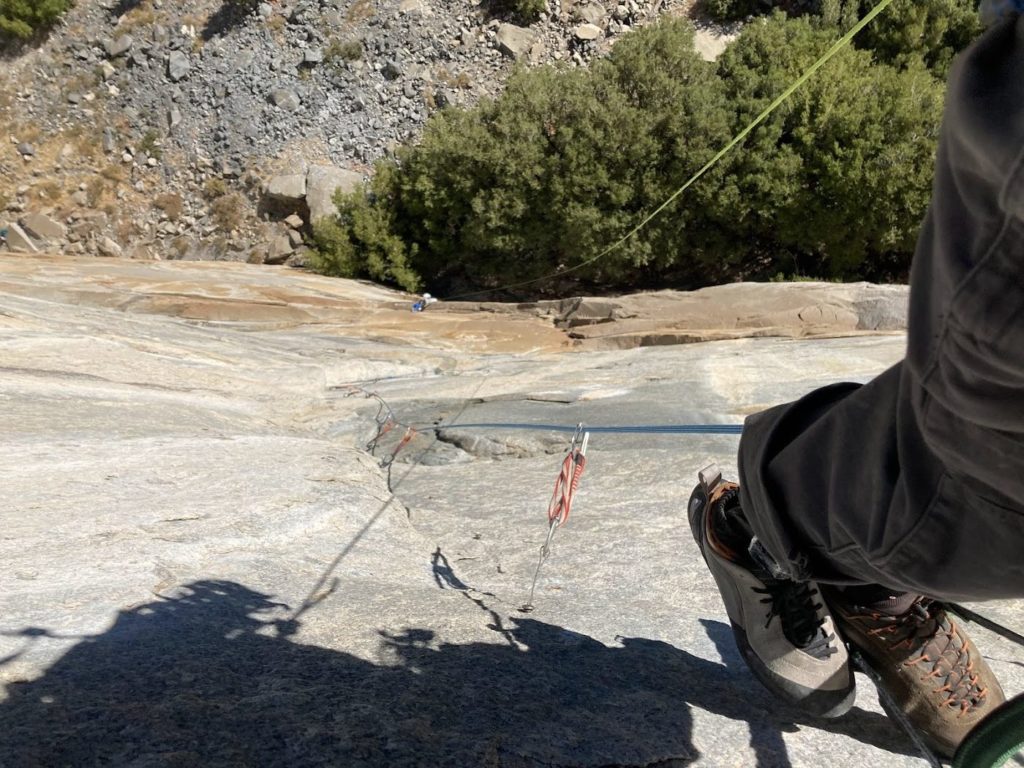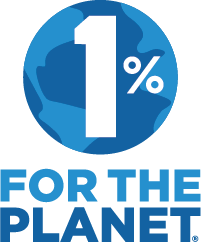
Words by Adrien Costa
I free-wheeled down the tree-lined road, shaking out the legs that had just taken me up and over Tioga Pass from Lee Vining on yet another 5+ hour training ride. Up high, much higher than the tallest pines, loomed the world’s most famous granite wall. And up on the Captain, one could make out tiny dots stubbornly inching their way up, giving massive scale to the wall. At night, the dots turned into a constellation of stars, almost indistinguishable from the night sky!
How I longed to be one of those dots, to feel the air and the wind below my feet, to see the trees in the meadow below as little bushes of broccoli, to have no concerns more pressing than scaling this cliff. But I first had other things to do with my life. It was only 2014. My dream of becoming a professional road cyclist was turning closer to reality every day. All I had to do was keep pedaling. This improbable, half-insane climbing desire could find a resting place, for now, in the deepest corners of my brain!

Fast forward seven years later. I whip my truck into the small pullout below the boulder and scree field leading up to El Cap’s shorter, but ridiculously steep, southeast face. The clock reads 4:46 AM. I step out and stand on one leg of bone and flesh, the other of metal and hydraulics. I am no longer a professional road cyclist. I no longer have two legs. Looking up at the dark outline of El Cap, I wonder whose life I am now living. I sure as hell never expected mine to look like this!
The universe has this rather bothersome tendency to remind us that the only constant is change, the only sure thing is that nothing is certain. I learned this the hard way. Yet us humans fight this, often subconsciously. By building up our egos and our identities, material possessions and indulgences, we seek to evade the inevitable. It can quickly become dangerously difficult to parse the imagined from the real, the tangible from the illusion!
I felt that I needed an adventure to shake myself out of the half-asleep daze of daily life I found myself trapped in. I wanted to see if I could find a little sliver of peace or wisdom up there. But I mostly just wanted to simplify my existence. It would be just me, my gear, and this rock. No illusions. Only, as I was about to find out, a whole lot of work!
Climbing a full-length, Grade VI route on El Capitan, by myself, was my big goal for the second half of my rock climbing season. Why alone? I don’t really know. In addition to the above, I see and feel, on a daily basis, how much assumption goes on in the climbing world around ability and disability. I wanted to shatter this paradigm; to prove that, with the right support, anybody can accomplish anything they put their heart and soul into. I wanted this climb to be a call for much-needed inclusion and open-mindedness in our climbing community!
For me personally, this climb represented a big stepping-stone in my climbing, moving towards more committing, more involved multi-day objectives as I seek to continue developing myself as a versatile climber, comfortable in all media!

I finished shuttling my two loads to the base just as the sun was rising. My original plan was to climb the Zodiac, a 16-pitch route of moderate, clean aid climbing that has frequently been referred to as a good introduction to “real aid” on El Cap. But a recent storm had soaked the first few pitches of that route in snowmelt, and I didn’t want to start a 4-day odyssey soaking wet. Luckily, I had a topo and gear for the nearby Tangerine Trip, which appeared steep enough to be completely dry. Between its consistent overhang, a huge traverse on the fifth pitch, and the fact that this route sees a bit less traffic than Zodiac, it was all starting to feel much more committing, and exciting, than my original plan! !
I decided to start the Trip via the first pitch of Lost in America, shown as “C3F Bad Fall” in the topo, which proved to be one of the cruxes of the route. I built my first anchor, cloved off a couple pieces low, and started up the pitch. My last piece of good protection was only 20 feet off the ground; I was well aware that blowing any piece on this first pitch could result in a ground fall. Very gingerly I inched my way up, breathing a huge sigh of relief upon regaining moderate terrain. I looked at my phone and realized that close to two hours had gone by…
 The next couple leads took some time as I got back in the rhythm of “real” aid climbing. I got my ropes fixed to the top of pitch 4, and having found a small ledge system below, decided to bivy there. It was a bit demoralizing to be just a couple hundred feet off the ground after a very long day of work, but I set my alarm for early and tried to enjoy the opportunity to rest for a little while. !
The next couple leads took some time as I got back in the rhythm of “real” aid climbing. I got my ropes fixed to the top of pitch 4, and having found a small ledge system below, decided to bivy there. It was a bit demoralizing to be just a couple hundred feet off the ground after a very long day of work, but I set my alarm for early and tried to enjoy the opportunity to rest for a little while. !
The next morning, I broke down the portaledge, sipped my coffee, pooped in a homemade WAG bag, and jugged and hauled to my high point. Here, I finally joined Tangerine Trip proper for the committing 160-foot leftward traverse pitch. The lead was fine, albeit long, but rapping the lead line, and then cleaning the pitch, was as demanding as leading itself. The next couple pitches went well, but still slower than I would’ve liked.
I forced down some plain ramen for dinner, and was stoked to be able to hang my prosthetic leg with me inside my small portaledge’s fly to charge its battery for the night. This is something I have to keep tabs on during any overnight adventure, and is something I have paid the cost of being complacent with.
By the end of the following day, I was really starting to feel the stress simmering. A stuck tag line had cost me a lot of time and mental energy earlier in the day. I was also running out of water fast and knew I needed to top out the next day. But in order to do this, I’d need to fix one more pitch in the dark. The only issue was that my headlamp was running out of juice, and my spare batteries were already dead.
So I set off. Keeping my headlamp as dim as possible, and hoping I wouldn’t get led astray, I tried to climb as efficiently as possible. It turns out that this pitch is also the route’s chossiest. It’s hard to believe there could be any loose rock up there, but I found it in spades as I quested upwards, always upwards, into the dark.
This was by far the mental crux of the climb. I felt so alone, so vulnerable, so close yet so far from the top, with very little margin for error. I cannot describe the relief that swept through my body once I could faintly make out the line of bolts of the anchor. !
I tucked into my sleeping bag just before midnight, but was stoked on a good day of work, and confident that I’d be standing on top the next day.

I definitely had not anticipated the nonstop focus that had to endure for four days straight, and it wore me down. But by the last day I found a good rhythm, and started letting my body move on autopilot through the steps. Stack haul line. Stack tag line. Set up lead anchor. Select gear for pitch. Put on GriGri and Microtrax. Climb the pitch. Tag up anchor and haul kit. Fix lead and haul lines. Rap the pitch. Release the bags. Clean the anchor. Jug and clean the pitch. Haul. And repeat. And repeat…! While free-climbing on the last couple pitches, I finally let myself have dreams of pizza. Touching the tree on top was surreal, and walking felt foreign, but more pressing at that moment were water, food, and figuring out how to get my 100+ lbs of gear, sprawled into various growing piles, off the mountain in one load.
What ensued was hell. With my haulbag on my back, a light backpack on my chest, a trekking pole in one hand and my portaledge in another, I stumbled and yardsaled my way down the East Ledges descent. I broke my prosthetic foot on the descent; under so much weight, the carbon fiber splintered from nothing more than a little trip. I could still walk (or hobble), but I could hear the fibers crackling with every step.

Four hours after leaving the tree, I walked in disbelief into the El Cap picnic area. The Trip was complete!
Looking back, I realize that aid soloing is a lot like pressing the fast-forward button on life. Every minute action, every decision you make has consequences that are felt and must be dealt with, without delay. And these consequences range from a minor inconvenience, and time wasted, to time not really existing anymore for you. The constant low-grade stress felt for days on end was exhausting, and yet there was no room for fear, nor any time to sit back. Only action could push my ropes further up the wall. Perhaps this is indeed an apt metaphor for life.
I have also come to realize that we have no option but to embrace change and make the most of the circumstances we are presented with. Life has taken me in directions I could never have envisioned as that fresh-faced boy riding his bike through the Valley. But by adapting and trusting the process, I was able to become, for a short little while, one of those tiny dots on that big, big wall.











